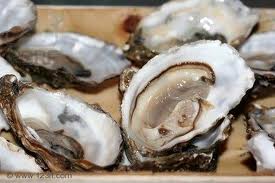Enzyme As Ultimate Food Critic
 Friday, November 12, 2010 at 9:37AM
Friday, November 12, 2010 at 9:37AM Researchers at the Monell Chemical Senses Center in Philadelphia have found that an enzyme in saliva called Slimey or silky? Your amylase level will decide. amylase, which breaks down starch into liquid, could play a key role in determining the appeal of various textures of food. A new genetic study shows that people produce strikingly different amounts of amylase, and that the more of the enzyme a person has in his mouth, the faster he can liquefy starchy foods.
Slimey or silky? Your amylase level will decide. amylase, which breaks down starch into liquid, could play a key role in determining the appeal of various textures of food. A new genetic study shows that people produce strikingly different amounts of amylase, and that the more of the enzyme a person has in his mouth, the faster he can liquefy starchy foods.
In the post-El Bulli era, chef Ferran Adria--the master of texture manipulation who has famously captured the flavor of carrot in the form of air--may want to consider opening a new restaurant: Casa del Amylase.
Scientists think the new finding could help explain why people experience foods as either creamy or slimey, sticky or soupy, and that this perception could affect food preferences.
"We all have had the experience of liking a food that someone else complains is too tacky, or slippery, or gritty, or pulpy," Paul Breslin, a researcher at the Monell center and a professor at Rutgers University in New Brunswick, N.J. told The Wall Street Journal recently. "This is why a given line of product often comes in different textural forms," such as orange juice with and without pulp, he said.
Starch comprises or is added to about 60% of the foods people typically eat, so determining how it's digested is central to understanding food-texture preferences, Monell center scientists say. Other research has shown that people have a preference for creamy sensations as well as for foods that start off solid and melt in the mouth such as ice cream and chocolate, said Dr. Breslin, who began the current research because of his interest in creaminess.
 Monell Center,
Monell Center,  enzyme,
enzyme,  taste
taste 